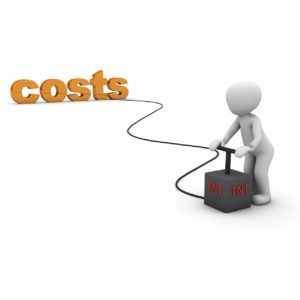 European countries could save millions of Euros if they switched to open access publishing and self-archiving, according to a new study commissioned by Knowledge Exchange.
European countries could save millions of Euros if they switched to open access publishing and self-archiving, according to a new study commissioned by Knowledge Exchange.
The report, “Open Access – What are the economic benefits? A comparison of the United Kingdom, Netherlands and Denmark,” was written by John Houghton, a professor of economic policy at Victoria University in Australia.
Houghton’s calculations estimate that a full author-pays open access publishing model would save Denmark 70 million Euros, the Netherlands 133 million Euros, and the United Kingdom the equivalent of 480 million Euros per year.
Moreover, a switch to a full self-archiving model running in parallel with traditional publishing would save them 30, 50 and 125 million Euros per year, respectively.
Houghton takes a broad “systems wide” economic view of the scholarly communication landscape, which includes funding, performing research, communicating and publishing the results. The model also includes larger benefits to R&D when literature is freely available.
The costs (and estimates of savings) can be found in the Annex of the report. These costs are also built into a downloadable spreadsheet (see the online model). Change the model assumptions, and the graphs update automatically.
Making large claims about the total costs of scholarly communication means making a lot of assumptions. Houghton has a clear understanding of the literature and borrows many of his assumptions from others such as Don King and Carol Tenopir’s studies of publishing costs. Other assumptions about the savings from an open access model are made by Houghton himself, and these I find rather unconvincing.
For example, Houghton estimates the costs for running open access journals (compared to toll-access journals) to be:
- 50% for online journal hosting
- 33% for marketing
- 20% for user support
In addition, Houghton estimates that open access publishers would extract 25% less profit from running their journals, hence transferring the savings back to authors and funders. Are these valid assumptions?
When one looks at the elaborate interfaces of BioMed Central, PLoS, bepress, or Hindawi, it’s questionable where Houghton sees the reduction in hosting costs.
The marketing of OA publishers also seems to dwarf what I’ve seen from subscription-access publishers. BMC has developed a full line of t-shirts, posters, brochures, and other advocacy material. In 2003, PLoS paid millions to run a primetime television advertisement. OA publishers travel to conferences, set up booths and give out the same pens, chocolates, and knickknacks as everyone else. They spend time responding to questions and comments on listservs, manage their own wikis, blogs, Twitter, and Facebook accounts, and send solicitations just like any other publisher — often more frequently than their subscription-access competitors.
And while author-pays publishers can forgo setting up access barriers for readers, they still need to manage a payment system. Subscription journals deal with hundreds of subscribing institutions (often managed through a handful of subscription intermediaries). Replace this with a payment model where you deal directly with tens-of-thousands of authors and ask yourself where the cost-savings can be realized.
Unless Houghton envisions a stripped-down future of featureless, supportless publishing, where authors are begging journals to accept their flawless manuscript (and their money), I’m not convinced that this model of publishing can be done more cheaply. And considering that most author-pays open access publishers are for-profit commercial entities, I don’t see how these publishers would be willing to accept 25% less profit than their commercial subscription-access counterparts.
Publishing costs are not the only way for the entire system to see a cost-savings by moving to open access publishing. Houghton calculates that it would cost the entire system less money by adding open access self-archiving in parallel with traditional publishing. These cost savings, according to the model, come from reduced costs in research and development. For instance, granting agencies could make funding decisions more quickly, researchers would be able to complete their work more expeditiously, and peer-reviewers could complete their task in less time if all of the literature were freely-available. In other words, toll-access creates a friction which slows the entire system down and thus makes it more costly as a whole.
If you accept that most of the actors involved in generating scientific knowledge are located at institutions that have seamless access to the vast majority of published literature, it’s difficult to accept that open access publishing is going to speed things up. Most of the cost savings that Houghton estimates are small, but add scores of small savings together and, voilà, you arrive at a huge discount.
While I am truly impressed with the magnitude and detail that went into this report, accepting the results on face value means accepting a myriad of inaccurate and invalid assumptions.
Discussion
4 Thoughts on "Challenging Assumptions on Open Access Cost Savings"
Phil:
If you take a “system” view isn’t it possible that small countries will inherently be “net beneficiaries” from Open Access? Because the number of articles they consume significantly exceeds the number that they produce, they will obviously benefit from transition to Open Access. Take an extreme example: a country that produces just one manuscript will willingly make one Open Access fee payment in exchange for free access to the world’s scholarly literature! So Open Access will ALWAYS be economically attractive to small countries.
As you correctly point out Open Access will not necessarily change the economic fundamentals of manuscript publication. So where does this “free lunch” come from?
Richard.
If you view Open Access as a relationship between costs (publishing) and benefits (reading), then yes, developing countries would be net beneficiaries from a full OA publishing model.
Other beneficiaries would be small liberal arts colleges, which focus on teaching, as would certain sections of industry that rely heavily on the published literature (i.e. the pharmaceutical industry), among others.
It may be more realistic to assume that the total costs of publishing would stay the same, only the costs would shift.
I don’t think that Houghton is arguing that OA is a “free lunch.” What is missing from the report, however, is a discussion on how the costs would shift and its policy implications.
Arguing that OA is cheaper than toll-access publishing does not mean that everyone will pay less money. It is clear that for some players, it will become a lot more expensive.


